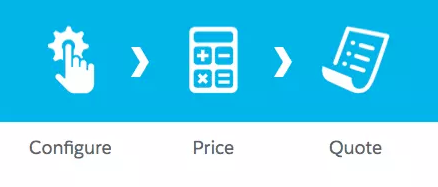The Evolution of CPQ
Configure Price Quote (CPQ) has been around for a long time. Product configuration and pricing were part of several homegrown ERP/MRP systems since the 1980s and has become more mainstream with the introduction of CPQ-focused software since the beginning of this century.
CPQ is a big growth area in the software market, and Gartner anticipates CPQ will continue to be one of the hottest enterprise apps for the foreseeable future, predicting a 20% annual growth rate through 2020 with the majority being from cloud-based solutions.
CPQ Trends in 2019
So, what are the key trends in CPQ in 2019?
When many of the CPQ products were introduced, most focused on one key area more than the others; the key areas being Product Configuration, or Complex Pricing, or Complex Quote Document Generation. With time, as many CPQ software offering matured, the CPQ capabilities of each these products are improving and getting more complete in how they address all three areas.
The latest trend is not merely improving and providing better capabilities around these three core areas, but expanding the reach and ease of use of the CPQ tool through these key improvements:
1. CPQ for the Channel and Customers
CPQ has traditionally been an internal tool used by an organization’s sales team or deal desks that were responsible for providing a quote to a customer. That trend has changed and companies are looking to enable their Channel Partners to quote on their behalf easily and to provide self-service quoting capabilities to their customers. Enablement of the quoting tool to these Partner and Customer channels has become an important requirement and a differentiator for many products in the CPQ space.
2. Guided Selling
This has always been an important component of the CPQ processes, but became a key feature with the increased emphasis on external users’ ability to use the tool effectively and provide guidance throughout the sales process, all the while suggesting up-sell and cross-sell products as part of this guided process.
3. Mobility
As mobile capability and use of applications using the mobile devices continue to rise, the ability of the software to have a mobile interface that is easy to use and intuitive has become a key differentiator and also helps to organizations’ users to respond to quote requests in real-time without delay.
4. Introduction of Artificial Intelligence (AI)
With any rules-based engines such as the ones that drive product configuration rules and pricing rules, you are starting to see these decision engines driven through AI-based engines in the software marketplace. Though they are just getting introduced now, you can expect to see this trend grow as the AI capabilities mature in the market place and work cohesively with Guided Selling Engine to provide a more intelligent interface. Eventually, this will result in proving not only an intelligent interface, but also result in reducing the administrative overhead in the maintenance of product and pricing rules, as these engines gain self-learning capabilities.
We will continue to explore these concepts in future blogs and we invite you to reach out to suresh.krishnan@perficient.com to discuss further.


